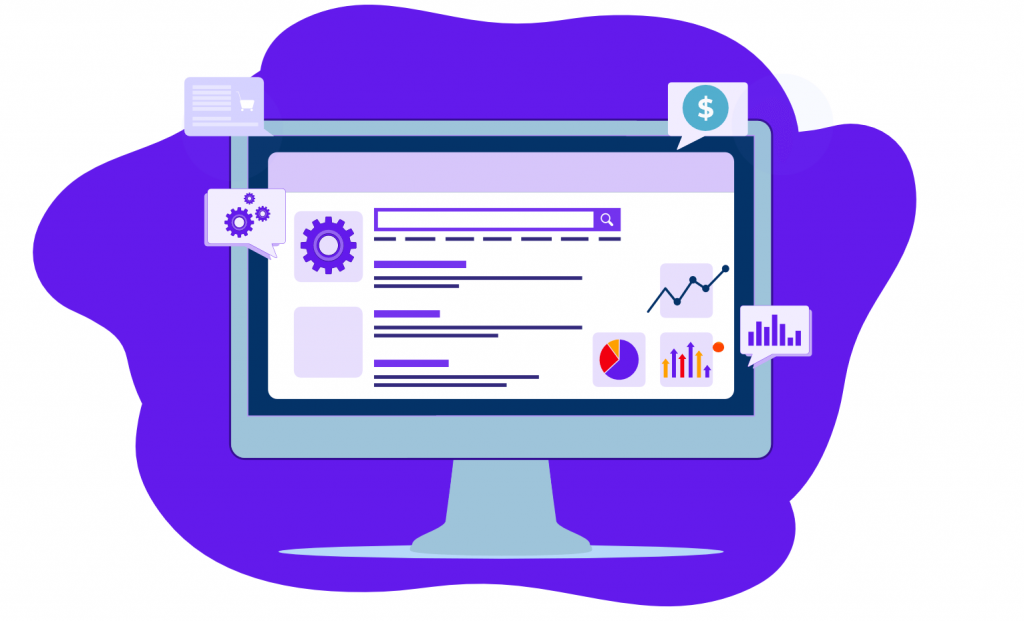Web Application Development Challenges You Need to Mitigate for 2021 and Beyond…
Technology is evolving at breakneck speed, and it is bringing its fair share of opportunities and challenges too. Businesses that are now understanding the importance of moving from legacy to a more digitized architecture must be on the lookout for these opportunities and know about the methods of mitigating web app development challenges for 2021 and beyond. But, before we dive deeper and introduce these challenges let us look into some basics first!
So, what’s a web application?
In concrete terms, an application is a software program that runs on a device. A web app is one that’s stored on the Internet and can be accessed from any browser. They aren’t constrained to any one operating system, don’t take up hard drive space on your device, and can be used by anyone with an Internet connection.
Web applications can include everything from productivity-improving collaboration tools (e.g. Google Drive and Slack) to less productive (but often fun) games (e.g. Candy Crush and Words with Friends). Popular web apps are also often available as mobile apps too.
Moving to the next important question: Why are web applications so important right now? As the world becomes increasingly digital, more of your business moves to the web. As a result, your web application development process becomes a vital part of your business.
What does a modern web application development process look like? It’s all about speed and security. You must create secure applications efficiently, in hours/days rather than days/weeks. Those applications must be easily maintainable. They must grow with your business.
How does your development process stack up? Perhaps a better question: How can you meet these goals?
If you want a modern development process, you must first address a few common challenges that most businesses face. In this article, we’ll explore 5 of these challenges and explain why they’re so important to your development process.
Challenge #1: Standardizing your development process

If you ask 5 developers to build an application, you might get 5 different approaches. Sure, they might meet the requirements, but they’re all built using a different process. Imagine the maintenance nightmare.
Unfortunately, this is a challenge for too many businesses. They don’t have a standard development process. The result: This makes maintenance far more difficult and time-consuming than it should be.
A modern dev process requires a standard approach that’s consistent and easily maintainable. Every developer works the same way. The process is understandable and predictable.
Challenge #2: Speed

These days, speed is the name of the game. Developers are under more pressure to deliver solutions quickly–without sacrificing function or security.
How can one move past the development time hurdle? There are a couple of options:
Hiring more developers: If you’re facing a development bottleneck, the simplest solution is building your team. However, there is no denying that this is the most expensive option, and most businesses can’t afford to hire a bunch of developers.
Using software tools to get more out of your existing team: Over the past few years, we’ve seen major growth in the low-code/no-code development software space. One of the driving forces behind this growth is the whole “do more with less” challenge. Low-code tools help your existing team create web applications 50-80% faster. How? The speed boost is driven by a couple of factors:
They eliminate coding in most projects: Most applications are built-in minutes or hours, without code.
More complex applications might take longer, and have the option to add custom code if needed.
They reduce testing: Since low-code tools create use pre-tested templates and components, testing time is dramatically reduced.
However, you choose to address the dev speed challenge, one thing is clear: The demand for fast development is only growing, and becoming a competitive necessity.
Challenge #3: Security

One of the main things web app developers are always concerned about is the security of their web app. With the rise of cyber-threats over the years, keeping the app secure should be the priority of product managers.
There are many things to consider when it comes to web application security such as the denial of service attacks, the safety of user data, database malfunctioning, unauthorized access to restricted parts of the website, etc.
Creating robust password requirements and multi-factor authentication for your users are also effective security measures. More complex passwords are less likely to be hacked. Multi-factor authentication, where your users take multiple steps to confirm their identities, also gives your application an added layer of protection.
Challenge #4: Bridging the talent gap

Web application development is becoming more complex. It’s evolving faster than ever. Developers need an ever-increasing, and ever-changing skillset.
The problem for businesses: Finding web developers with modern skills. Sure, they have developers to maintain their current systems…but those are often outdated. The skills you need for modern web app development don’t always align with the skills you need to keep the business running.
How do you find developers that understand security, integration, responsive design, etc.…? How do you bridge the skills gap without hiring a dozen new employees? Here are two common approaches:
- Adopt development tools: Development tools bring modern skills to your existing team. For instance, suppose you have a team of COBOL developers. A web development platform will help those developers create web apps with a minimal learning curve.
- Set up training: There are plenty of online training options available for developers. Set up training classes for your team, or incentivize them to take training classes on their own.
Challenge #5: Support and Maintenance

Just like your car needs service after every three months, so does your web app. Building a nifty app is great, but without the right support, maintenance and upgrades, your app is only relevant until the next algorithm release. Without application maintenance, businesses become unhappy because the app doesn’t perform well and the tech leader gets the heat.
Challenge #6: Integration

More and more, business applications live outside of the firewall. They are more diversified than in the past. For instance, a modern business might use a SaaS-based CRM system, in-house BI tools, and host their website on the cloud.
While this improves flexibility, it creates a challenge. How do you tie everything together? The challenge for web developers is no longer building every feature into an application. It’s creating an application that can integrate with other applications. This challenge can easily be handled by creating more indigenous applications and integrating them with other applications.
How does Tigersheet fit into the grander scheme of things?
Tigersheet has been dedicated to providing custom web applications that have been changing the way businesses work. We like to take advantage of the disruptive technologies that can provide scalability to our clients.
Developing a sound and functional web application means you can make the most of modern technologies and benefit financially. There is no denying that the constant influx of money in the form of grand revenues allows you to flourish in this market. Tigersheet is a custom app solution provider that has helped various businesses successfully achieve their digital transformation goals. We take on web app development with a straightforward motto; help you deliver excellent customer experience and personalized experience to your audience.
TRY Tigersheet for FREE and witness the change in your organization today!


IT
5 Big Challenges facing CIOs and IT leaders in Pandemic 2021

LCNC
The Ultimate Guide on How to Find a Low code/No code Platform for your Business

LCNC
5 Important Metrics to Measure the ROI of Low-Code

LCNC
8 Essential Factors of Low-code/No code Software


LCNC
The Best No-code Apps for Website Development

IT
Task Management App Vs. Work Execution Platform: What Do You Need and What’s the Difference?

IT
Digital Transformation: 7 Important Questions for Your Organization

LCNC
7 Reasons Why Low code is the Ideal Solution for Business

IT
Top 10 Types of Software Every Business Needs-Infographic

General
The Best Airtable Alternatives to Look Out for in 2021 and Beyond



